Cats2D Multiphysics > Overview > High resolution images > Moffatt eddies
Accurately resolving the tertiary Moffatt eddy
Cats2D puts together extreme graphics resolution with extreme computational resolution. Stream function values are computed to high accuracy by an integral method, and a contouring algorithm based on recursive subdivision of elements is used to precisely locate and draw contours. Allow me to demonstrate its capabilities.
I computed Stokes flow in a lid-driven cavity using a 300x300 element mesh (992,402 unknowns):
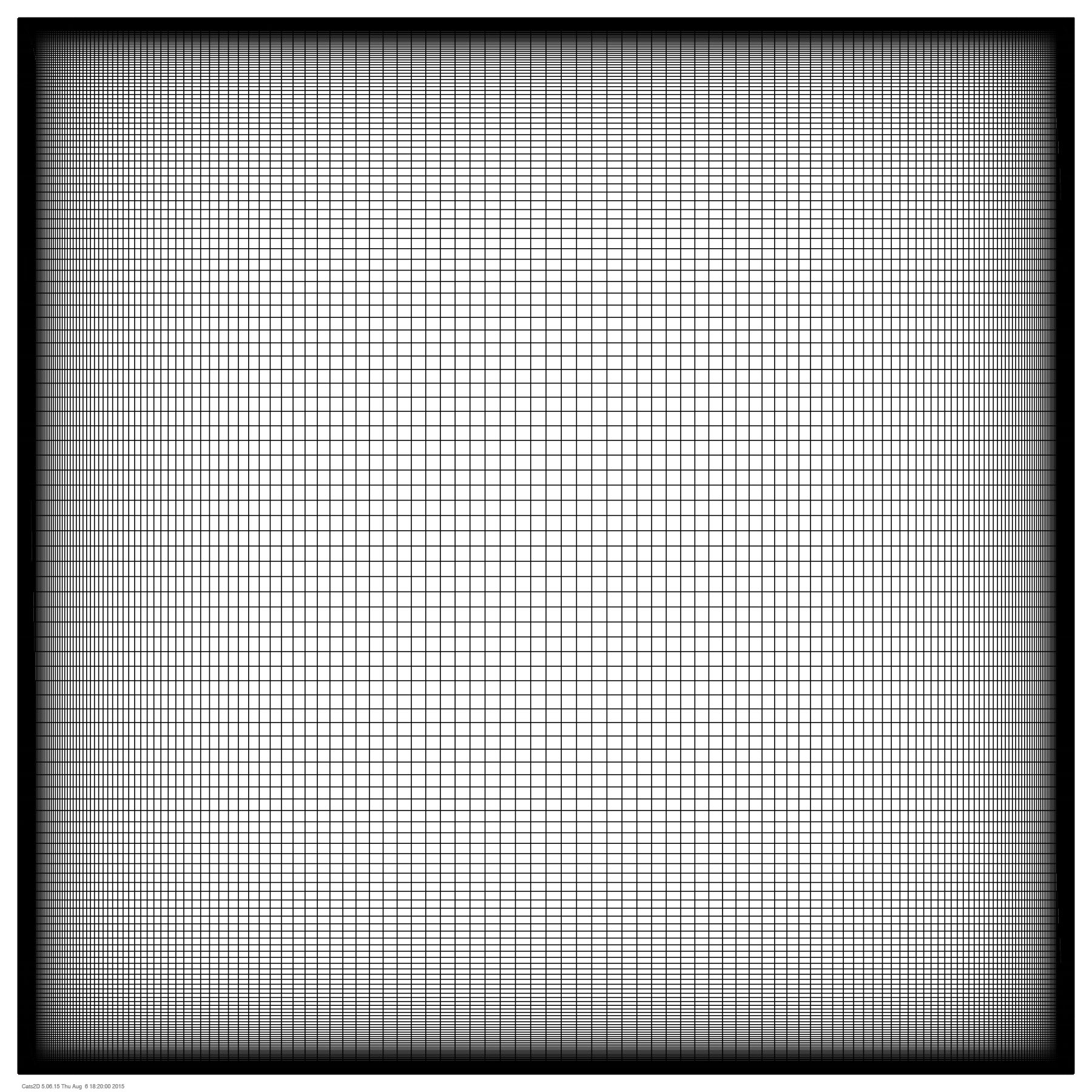
Thankfully it took only 10 seconds on my laptop. The mesh is refined to an element size of 1.e-5 at the walls, too small to discern in this 300 dpi downsampled image.
The lid-driven cavity exhibits Moffatt eddies in its lower corners, as shown here:
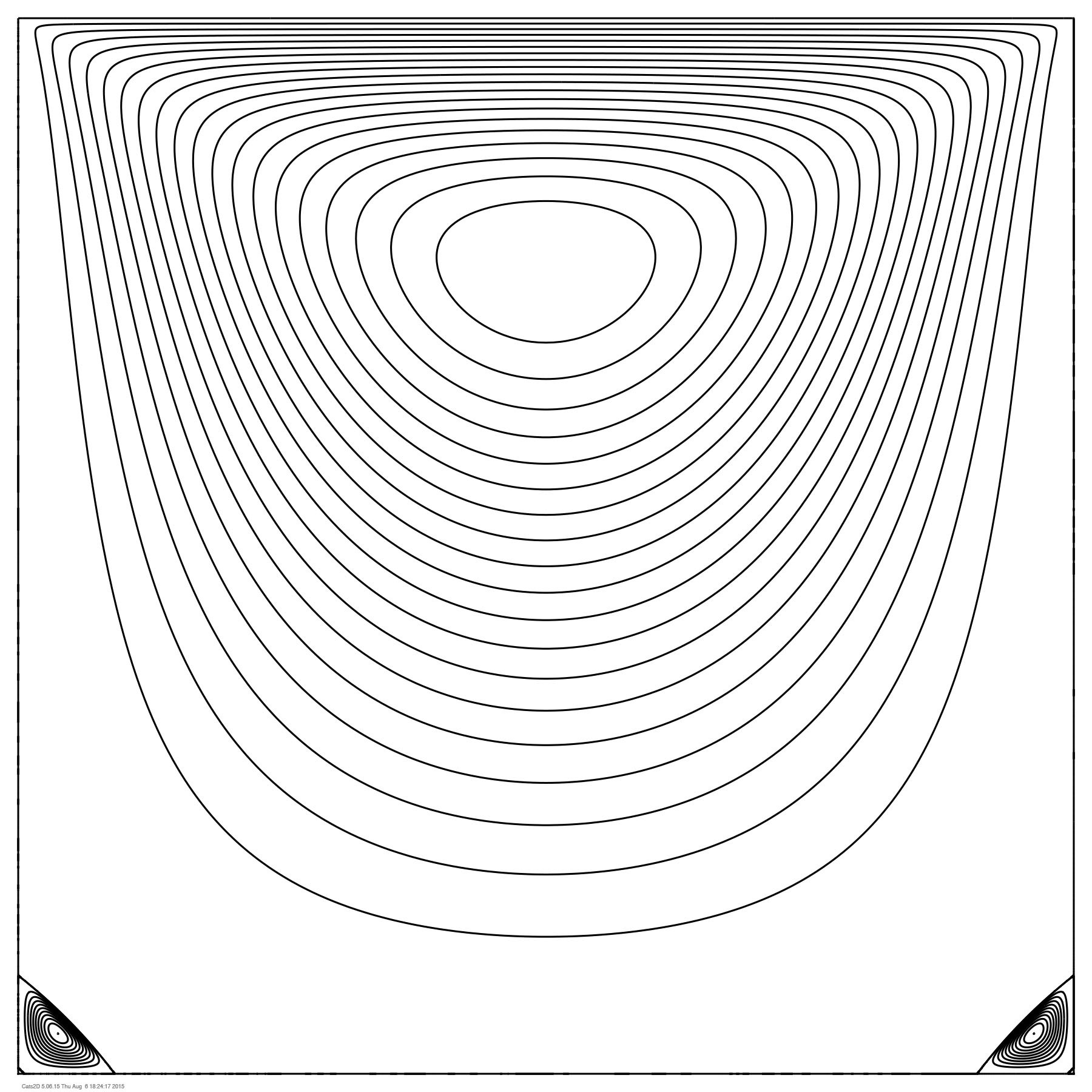
Zooming into a 0.1 x 0.1 area at the lower corner shows the primary Moffatt eddy, and we can also see a separation streamline for the secondary eddy:
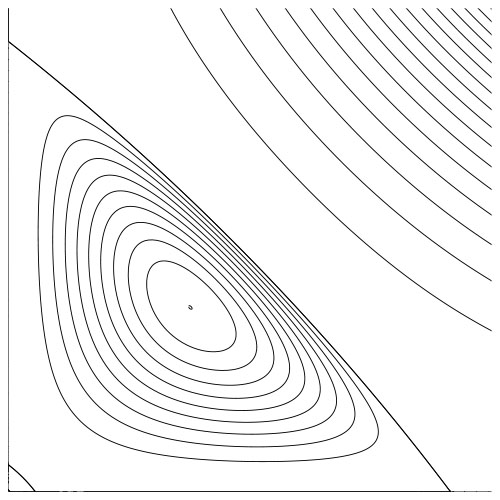
Zooming into a 0.007 x 0.007 area shows the secondary eddy, and we can also see a separation streamline for the tertiary eddy:
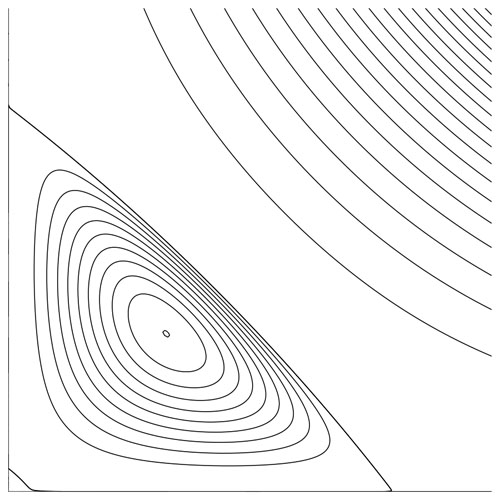
Zooming into a 0.0005 x 0.0005 area shows the tertiary eddy:
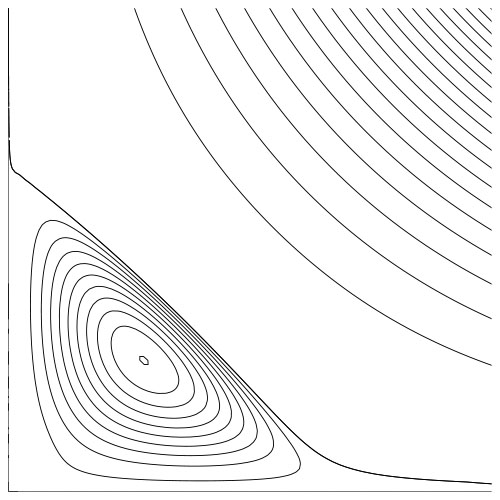
The mesh at the same zoom level shows that the element size is easily small enough to capture the tertiary eddy:
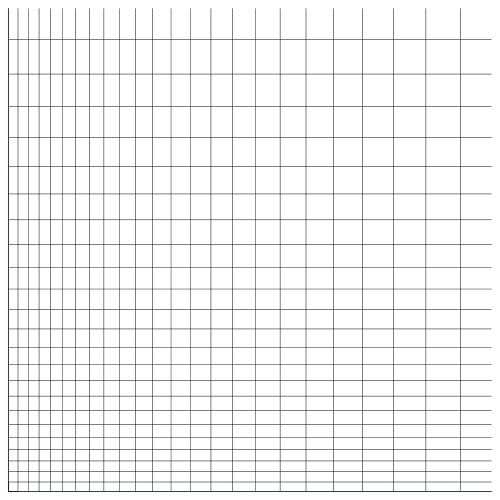
The elements also appear to be small enough to find the quaternary eddy, but it fails because the numerical resolution of double precision real numbers is limited to 16 significant digits. The main vortex has a stream function minimum equal to -1.0007e-1. The computed stream function extrema for the three Moffatt eddies are 2.227e-6, -6.14e-11, and 1.7e-15, respectively. The relative eddy strengths span 14 orders of magnitude in this calculation. The relative strength of the eddies decreases geometrically by a factor of 3.63e4 for primary to secondary, and 3.65e4 for secondary to tertiary, which is nearly constant in accord with Moffatt's analytical prediction. By this progression the fourth eddy has a stream function minimum at -5e-20, which is 18 orders of magnitude smaller than the main vortex.